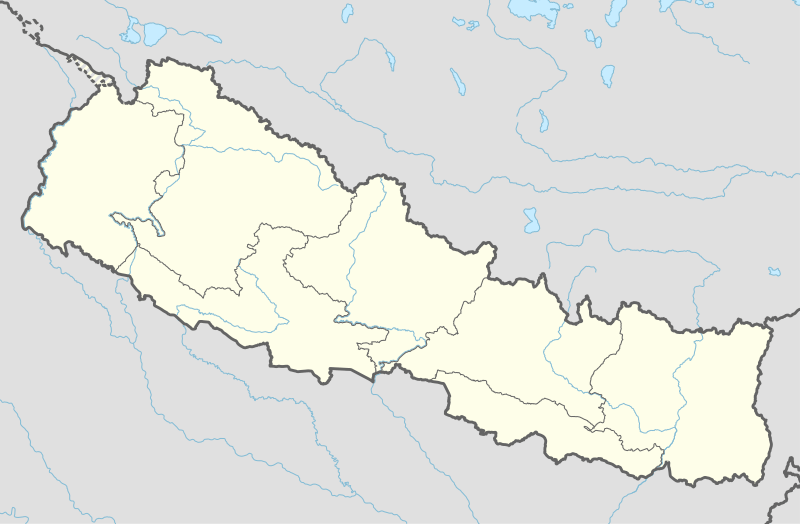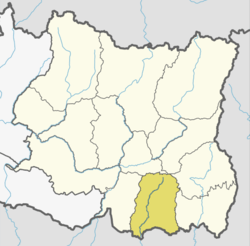Drabesha
Darbesha is a village development committee and the abode of Drabeshiyans (native inhabitants) in Morang District in Province No. 1 of south-eastern Nepal. It has been merged with Rangeli and known as part of the Rangeli Municipality since 2073 B.S. At the time of the 1991 Nepal census it had a population of 14,565 people living in 2709 individual households.[1]
Darbesha दर्वेशा Demonym: Drabeshiyans | |
|---|---|
| Motto(s): Let's get united and Develop | |
 Darbesha Location in Nepal | |
| Coordinates: 26.51°N 87.49°E | |
| Country | |
| Province | Province No. 1 |
| District | Morang District |
| Population (2010) | |
| • Total | 18,047 |
| Time zone | UTC+5:45 (Nepal Standard Time (NST)) |
It was supposed to be only VDC in Nepal where signal of mobile and wireless service is not available. Although Ncell and NTC have built low quality smaller towers on neighbouring Rangeli and Kanepokhari routes, no signal was felt on device on this VDC. Ranjani Chowk in Darbesha only received signal which was extremely low. But it does receive signal of Ncell with the internet capacity of 2G now. NTC signals cannot be received yet, however. Cable TV and electricity has reached there. Recent Survey estimates that if huge tower would be installed in Darbesha-1, it would be able to serve good quality of signal to smartphone and mobile users in whole Darbesha including neighbouring VDCs.
Population
Major languages in this VDC includes Nepali and Maithili.
This VDC is thickly populated with major Nepalese ethnic groups such as Rajbanshi, Tajpuriya, Maithil (indigenous Madhesi), Brahmin and Chhetri.
| Year | Pop. | ±% |
|---|---|---|
| 1991 | 14,565 | — |
| 2001 | 16,698 | +14.6% |
| 2006 | 18,661 | +11.8% |
| 2010 | 18,047 | −3.3% |
References
- "Nepal Census 2001". Nepal's Village Development Committees. Digital Himalaya. Archived from the original on 12 October 2008. Retrieved 18 December 2008.
